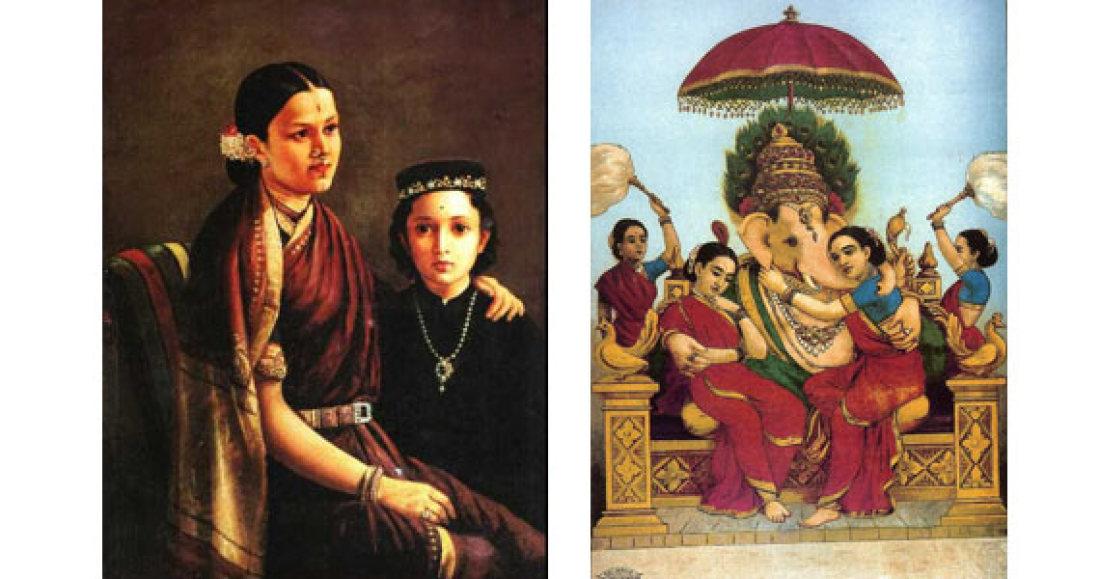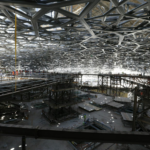New Building In Sree Chitra Art Gallery Dedicated To Great Indian Triptychs
Sree Chitra Art Gallery of Thiruvananthapuram has played a significant role in preserving modern Indian art. It has had a lion’s share in safeguarding the works of the father of Modern Indian art, Raja Ravi Varma. In a recent report, a painting depicting the mythological character of Damayanti by the legendary artist was sold for over 11 crore rupees at Sotheby’s auction in New York. So it goes without saying that Varma’s art has been shaping the styles of the present day artists as much, and the love for his art is still alive. It is, therefore, that the move of Minister of Archaeology, Kadannappally Ramachandran, to build a new building to house these priceless artifacts is welcomed by the art lovers.

Raja Ravi Varma was born in the royal family of Travancore in the village of Kilimanoor in Kerala. He began painting on the walls of the house at a very early age. He began his formal training in Madurai. He learned the art of water painting and oil painting. The biggest boast to his career was when he won a widespread acclaim and award for his paintings in an exhibition held in Vienna in 1873. In 1893 his works were sent to World’s Columbian Exposition which was held in Chicago and it is here he was awarded with three gold medals. He roamed the lengths and breadths of the country in search of the subjects, and often modeled his women characters as women from south India because he considered them to be beautiful.

His representations of God and Goddesses have found a just place from Calendars to wall hanging to the comics like Amar Chitra Katha. The effervescence of his colour palette had a great impact on the royal court of Travancore. His works often depict mythological figures, daubed in a splash of dazzling colours and draped in Maheshwari or Paithani sarees. His work has evoked a distinct femininity which is sensitive and sensible as much as it is related to the global receptivity. He especially drew inspiration from the Western traditions and techniques and included oil paint and easel paint in his work. It is owing to these factors that his triptychs became synonymous to “Indian-ness.”
Varma’s works played a significant role during the prime days of India’s struggle for freedom. Nationalists like Bal Gangadhar Tilak drew inspiration from the mythic paintings of Varma to sow the seeds of Nationalism, a crucial factor which would lead India to freedom. Varma’s works often depicted the richness of courtly culture, especially that of the royal court of Travancore. This was, though, was at the peak of freedom struggle, when the focus was shifting from the kingship to democracy, Varma’s triptychs depicting court proceedings evoked a nostalgia for the mythic past.
Another reason behind Varma’s popularity in his time was the fact that he made certain to make the lithographs of his paintings, especially that of Gods and Goddesses, available to the public at an affordable rate. It is because of this that, even the untouchables, who were barred from entry in the temples for ages, where able to worship the deities without attracting social criticism and wrath. His depictions were considered to be a tad too showy and sentimental but nonetheless popular in India. Amongst the triptychs of the artist, the episodes from the mythological stories of Dushyanta and Shakuntala, Nala and Damayanti, and Mahabharata are quite famous. Varma’s popularity was such that every day countless painting requests arrived at Kilimanoor palace and to manage this the palace authorities were forced to open a post office!

With the emergence of painters like M.F.Hussain, during the ‘50s and ‘60s, Varma’s popularity saw a sharp decline. The reason behind this decline was the belief, and the image of Varma being the painter who painted pictures of Indian Gods and Goddesses.
Despite that Varma remains a popular public figure and a revered artist in India. There have been atleast five films made based on the life and work of Raja Ravi Varma. ‘Before The Brush Dropped,’ a 30 minute documentary by Vinod Mankara saw the light of the day after 3 years of arduous research. Another two, ‘Divine love’(documentary) and ‘Prince Painter,’(a feature film), were directed by R. Sarath. He cast a descendant of Raja Ravi Varma to play the lead character. Prince Painter basically depicted Varma’s life spent in Baroda and Mumbai. A recent film was directed by auteur Ketan Mehta called ‘Rang Rasiya.’ Initially, it was met with a number of protests citing the nudity in the film. The release of the film was stalled and it was later released in 2014. The film depicted the love story of Raja Ravi Varma and his muse Sugandha. Yet another film in Malayalam was made by the director Lenin Rajendran named Makaramanju which starred Santhosh Sivan, the director, cinematographer in the lead role.

Varma’s craze doesn’t end with the films and the auction of his portraits. Limca Book Of World Records cites that most expensive saree in the world was a 15-pound saree which was worth $100,000 showcasing the paintings of the artist laureate. It is a hand woven sari made by 30 weavers, who specialize in making sarees for Chennai Silks. The sari was put together in 7 months time and had the painting, ‘Lady Musicians,’ in the center with 10 other paintings of Varma. The queen of Dandiya, Falguni Pathak is equally smitten by Raja Ravi Varma. She includes the painting of Varma’s in the popular number of 90s,’Meri Chunnar Ud Ud Jaye.’ The video portrays the warmth of Shakuntala and shows a woman stepping out of a Varma’s painting.
Citing the reason behind the undiminished craze and popularity of artist laureate, Raja Ravi Varma, Yamini Telkar, the Mumbai director of Delhi Art Gallery, informs Hindustan Times in a recent interview, “The reason for the contemporary interest in Raja Ravi Varma has got more to do with distance and time. The heavy influence of the Calcutta and Bombay Progressives is no longer as strong today, as it was in the ’50s. Now, we recognise Ravi Varma not just as pioneering, but also as someone who has self-fashioned a whole new vocabulary of Indian art. During his time, Varma was pioneering in his use of canvas as a medium, and his aesthetic, while couched in the garb of tradition, was surprisingly modern.”
It is for all these good reasons and more that we see Varma being hailed as “Father Of Modern Indian Art,” “the greatest painter of India” and “prince among painters and a painter among princes.” Undoubtedly, the appearance of a new building dedicated to such a worthy cause is a laudable move by the Ministry Of Archaeology.



What do you think?